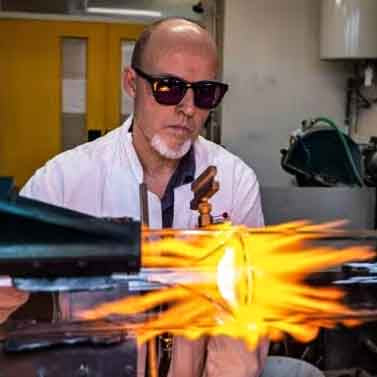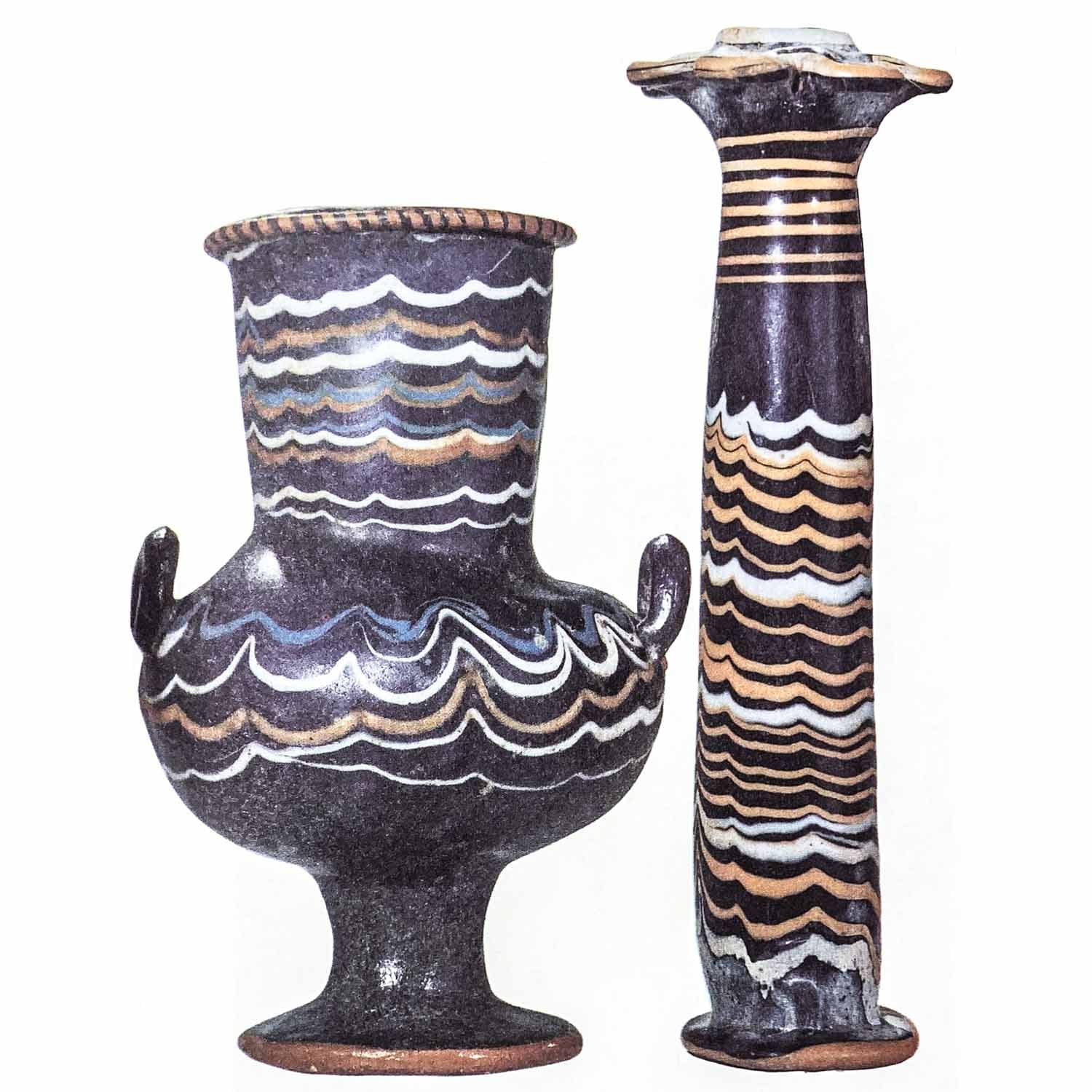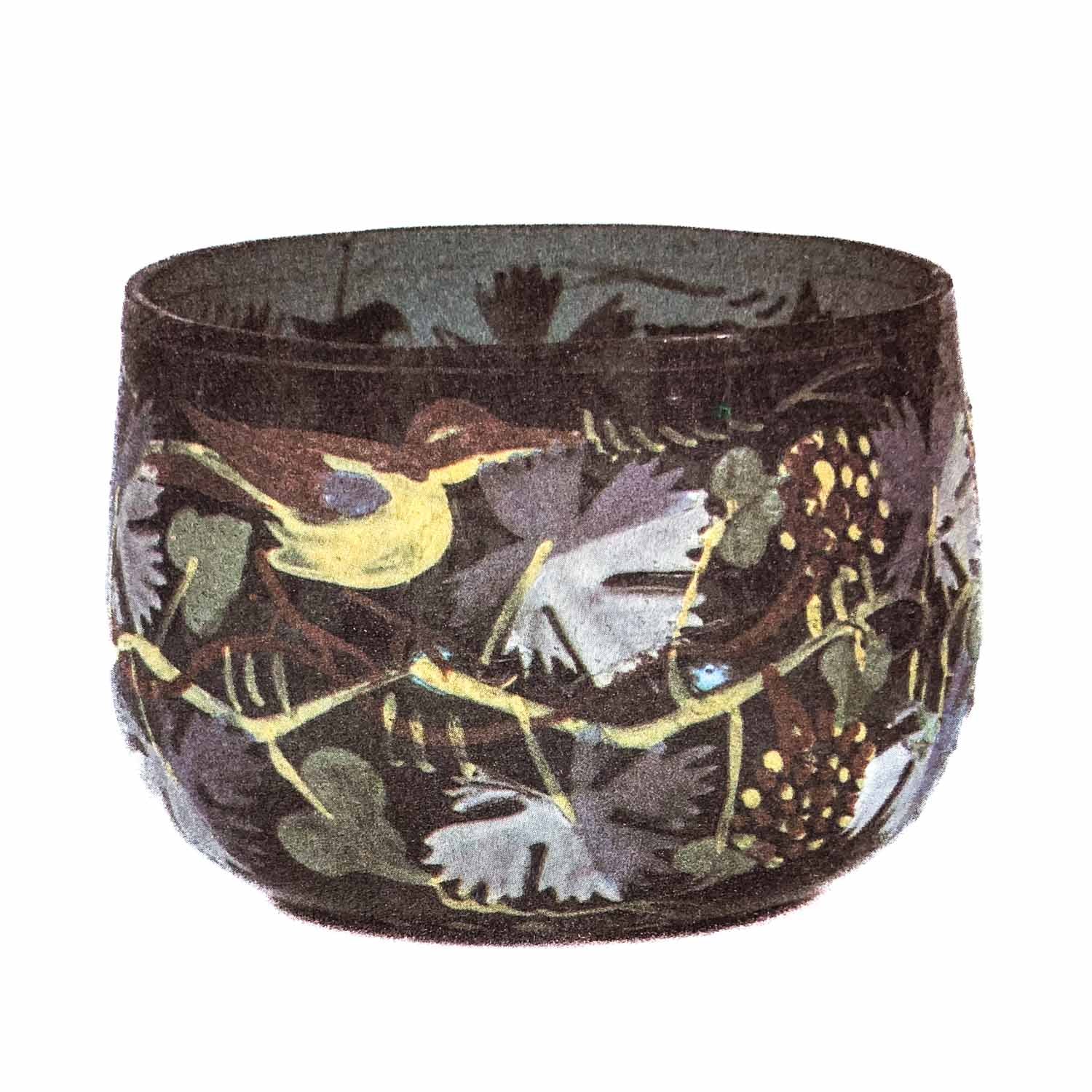The property of glass is its chemical neutrality, ideal for the preparation of medicines and cosmetics or the long conservation of liquids with medicinal virtues: collyrium, ointments, balm.
Pliny the Elder clearly recommends, in his Natural History, to keep in glass vases the boar's urine that he praises in the treatment of earache.
Two objects in glass unknown in ancient artifacts, illustrate two of the innovations of medieval medicine: the beginnings of optics and distillation. If the problems of sight were evoked in Antiquity by Aristotle in the problemata, in particular myopia and presbyopia, the invention of glasses was much longer in coming. The first bezicles appeared in the monastic environment, in the thirteenth century, so that the monks could see up close and copy the sacred manuscripts.
Distillation, an 8th century Arab invention, was introduced in the West with alchemy in the 11th century. It requires the use of an alembic if the distillation is done by raising the vapors. This apparatus is described in alchemical texts but also in medieval treaties on medicine. It is mainly used for the production of rose water and alcohol used mainly by doctors and apothecaries.
During the Renaissance period, glassblowing became a crucial tool for scientific research, scientists were eager to explore the natural world and understand the underlying principles that governed it. Glassblowing allowed them to create specialized equipment that could be used to observe and measure the world around them.
One of the innovations of Renaissance glassblowers was the creation of the microscope. Using glass lenses, scientists were able to magnify objects and observe them in greater detail than ever before. This allowed them to make groundbreaking discoveries in the fields of biology and medicine.
Glassblowers also created a wide range of scientific instruments, such as test tubes, beakers, thermometers, barometers, telescopes. These tools allowed scientists to measure temperature, pressure, and distance with greater accuracy, leading to new insights and discoveries.
The use of glassblowing in scientific research during the Renaissance had a significant impact on the world. It allowed scientists to make groundbreaking discoveries that advanced our understanding of the natural world, and it paved the way for future scientific innovations.
Today, glassblowing continues to be an important tool in scientific research, with glass instruments and equipment being used in a wide range of fields, from chemistry and physics to medicine and biology.
The inheritance of Renaissance glassblowing continues to inspire and captivate people today, both in the scientific and artistic communities.
Related Posts:
Art glass in the world
History of glass
École de Soufflage de Verre Scientifique Dorian , Paris




Leave a comment
All comments are moderated before being published.
This site is protected by hCaptcha and the hCaptcha Privacy Policy and Terms of Service apply.